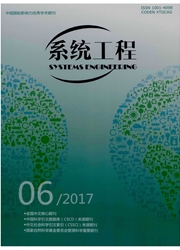

 中文摘要:
中文摘要:
环境风险沟通是"风险社会"背景下的现实问题,特别需要引起环境风险管理者的重视。结合认知心理学的"建构层次理论"和行为决策科学中的"概率-时空权衡模型"建立了"心理距离"模型,并分析了模型结构和参数的经济涵义。心理距离模型以一种可加的方式将个体对概率、时间和空间距离的感知整合起来,揭示了这些维度之间的互补关系。模型表明,个体对于环境风险事件的心理距离决定了他的环境风险判断,而心理距离取决于个体对环境风险的发生概率和时空距离这些信息的认知,这给理解个体的环境风险认知并进行环境风险沟通提供了理论指导。
 英文摘要:
英文摘要:
Environmental risk communication is a practical problem in the context of risk society, to which the risk managers should pay attentions. We proposed the psychological distance model based on the integration of the construal level theory and the probability-time & space trade-off model, and analyzed the model structures as well as the economic implications of the parameters. Psychological distance model integrates individuals' perceptions of probability, temporal and spatial distance in an additive manner, and indicates the complementary relationship of them. The model shows that an individual's psychological distance determines his environmental risk judgment, while the psychological distance depends on the individual's perception of the probability of the occurrence of the risky event as well as its temporal and spatial distances, which provides theoretical guidance for understanding individuals' environmental risk perceptions and for conducting environmental risk communication.
 同期刊论文项目
同期刊论文项目
 同项目期刊论文
同项目期刊论文
 Knowledge Complementarity, Knowledge Absorption Effectiveness, and New Product Performance: The Expl
Knowledge Complementarity, Knowledge Absorption Effectiveness, and New Product Performance: The Expl Projective ART with buffers for the high dimensional space clustering and an application to discover
Projective ART with buffers for the high dimensional space clustering and an application to discover 期刊信息
期刊信息
